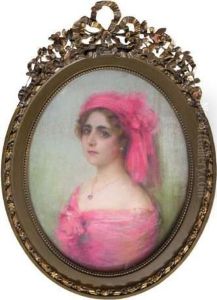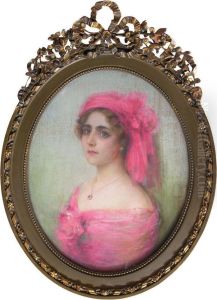Nikolai Alekseevitch Kasatkine Paintings
Nikolai Alekseevitch Kasatkine was a distinguished Russian painter and graphic artist, born in 1859 in the city of Morshansk, Tambov Governorate, within the Russian Empire. He is renowned for his contributions to the world of Russian art, particularly through his realistic portrayals of the peasantry and the working class, reflecting the socio-political climate of his time. His works often depicted the hardships and the resilience of the common people, earning him a place among the most poignant chroniclers of Russian life at the turn of the 20th century.
Kasatkine received his formal education in art at the Moscow School of Painting, Sculpture and Architecture, one of the most prestigious art schools in Russia. Under the tutelage of renowned artists such as Vasily Perov and Illarion Pryanishnikov, he honed his skills and developed a keen eye for detail, which would later define his artistic style. Throughout his career, Kasatkine was deeply influenced by the social realism movement, which sought to use art as a means to highlight and critique societal issues.
After completing his education, Kasatkine embarked on a career that saw him delve into various forms of art, including painting, graphic work, and illustration. His illustrations for literary works, particularly those by Russian authors, were celebrated for their depth and emotional resonance. In addition to his work as an illustrator, Kasatkine's paintings often featured scenes from Russian history and folklore, imbued with a sense of national pride and cultural identity.
Kasatkine's contributions to Russian art were recognized during his lifetime, and he was awarded several honors for his work. He was an active participant in the artistic life of Moscow and was involved with various art societies, contributing to the development of a distinctly Russian art style during a period of significant cultural change. Despite the political turmoil and societal shifts that occurred during his lifetime, including the Russian Revolution of 1917, Kasatkine remained committed to depicting the lives of ordinary Russians, making his work an invaluable historical record as well as a testament to his artistic skill.
Nikolai Alekseevitch Kasatkine passed away in 1930, leaving behind a legacy that continues to be celebrated in the canon of Russian art. His dedication to portraying the truth of human experience, combined with his technical skill and deep empathy for his subjects, has ensured his place in the annals of art history. Kasatkine's work not only provides insight into the era in which he lived but also serves as a reminder of the power of art to reflect and shape the human condition.

